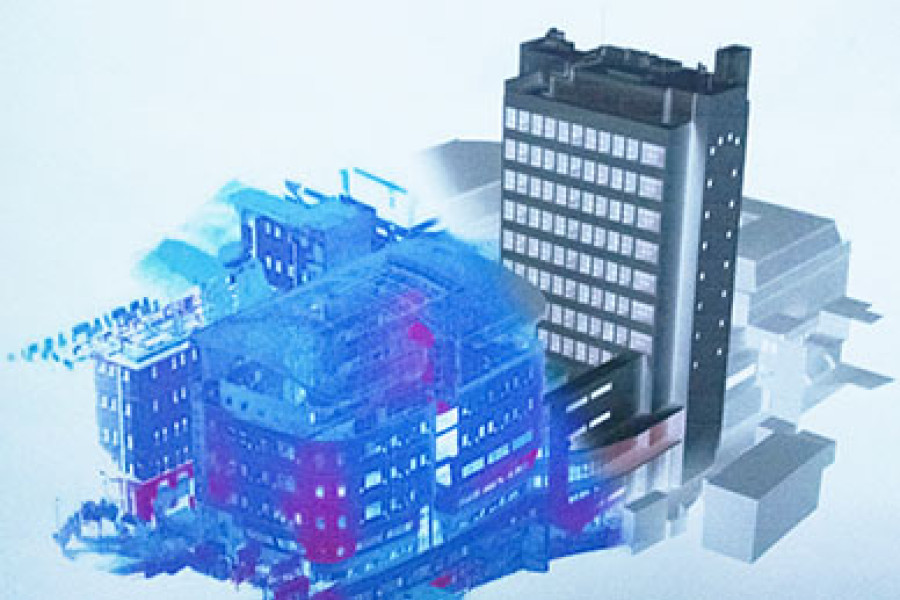The “Second LASER-TO-BIM Conference 2015” organized by the School of Architecture of Universidad de Santiago was positively evaluated. It aimed to promote among academics and business people the use of digital representations of objects by means of laser and BIM technology. The software scans the object by means of a laser and creates a scale model, what allows seeing its details in 3D on a computer.
With the purpose of bringing together all the initiatives related to the use of laser scanning tools and their application in BIM (Building Information Modelling) software environments, the “Second LASER-TO-BIM Conference 2015” was held at the MIDA’s Room at the School of Architecture of Universidad de Santiago.The activity was organized by the School of Architecture and it intended to promote the massive use of this technology in the engineering, architecture and building industry and its inclusion in the curricula of university programs.BIM GROUPThe founder of the BIM Group of Universidad de Santiago, the architect Gastón Herrera, explained that this activity was oriented to company representatives and people related to the academia.He added that “the BIM Group of Universidad de Santiago is an initiative of the School of Architecture, which has been working with this software program for more than 10 years. For this reason, the idea is to contact other professionals from different fields, like topography and mechanics, to allow information transfer among different areas and transform this integrated work of the BIM Group in a model for the country.”He explained that they have signed several information transfer agreements and have given several courses for a variety of programs, to generate products and a common language for different disciplines.BIM-Chile and MOPFor his part, Danny Lobos, a member of BIM-Chile, said that the activity brought the industry, the academia and customers together to learn how this technology works. For this purpose, some companies were invited to present examples where laser had been used to generate 3D models with BIM technology.Lobos said that some remarkable aspects of this conference were “the willingness of the industry to show its models, which are not many, as this an area that is recently developing in Chile, and the interest of the academics, mainly from Universidad de Santiago, who have included this technology in the curriculum so that students learn to use the system before they graduate.”Alejandro Gómez Grandón, consultant to the Roads Unit of the Ministry of Public Works (MOP, in Spanish) invited software and hardware companies to work with universities, so that students become familiar with this technology and know how to use it when they enter the labour market.The systemThe Building Information Modelling (BIM) technology uses files of intelligent and parametric objects; it interprets them logically and then stores them.This is the difference with CAD, the other software used to generate objects scale representations, which only uses 2D or 3D, without differentiating elements.The filed data is obtained through a laser that scans the object and generates points. The BIM system stores them and transforms them in a 3D image on the computer.The focus of the BIM Group of Universidad de Santiago- made up of professors Gastón Herrera, Marta Baeza, Erik Parraguez y Luis Vallejo- is the interdisciplinary BIM training that will allow to strengthen the digital curriculum of the university, and to connect the university with cutting-edge technology and productive sectors of the country.BIM-Chile is made up of professionals from different universities who collaborate with different higher education institutions.Representatives of the Ministry of Public Works, the School of Architecture of Universidad de Santiago, BIM-Chile, Microgeo, BDL Group, the School of Civil Construction of Pontificia Universidad Católica de Chile, GEPUC UC, Construsoft, Pixis, POINT CLOUD+EBIM, RE-Studio, Bentley and Autodesk, also participated in the activity.Translated by Marcela Contreras


